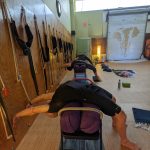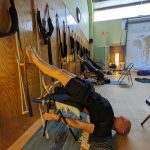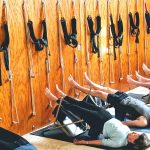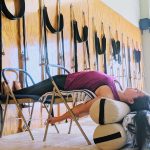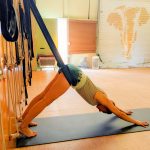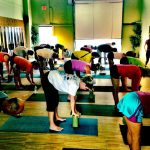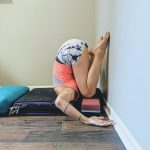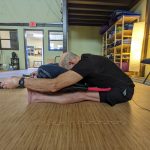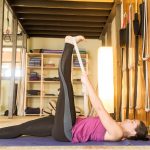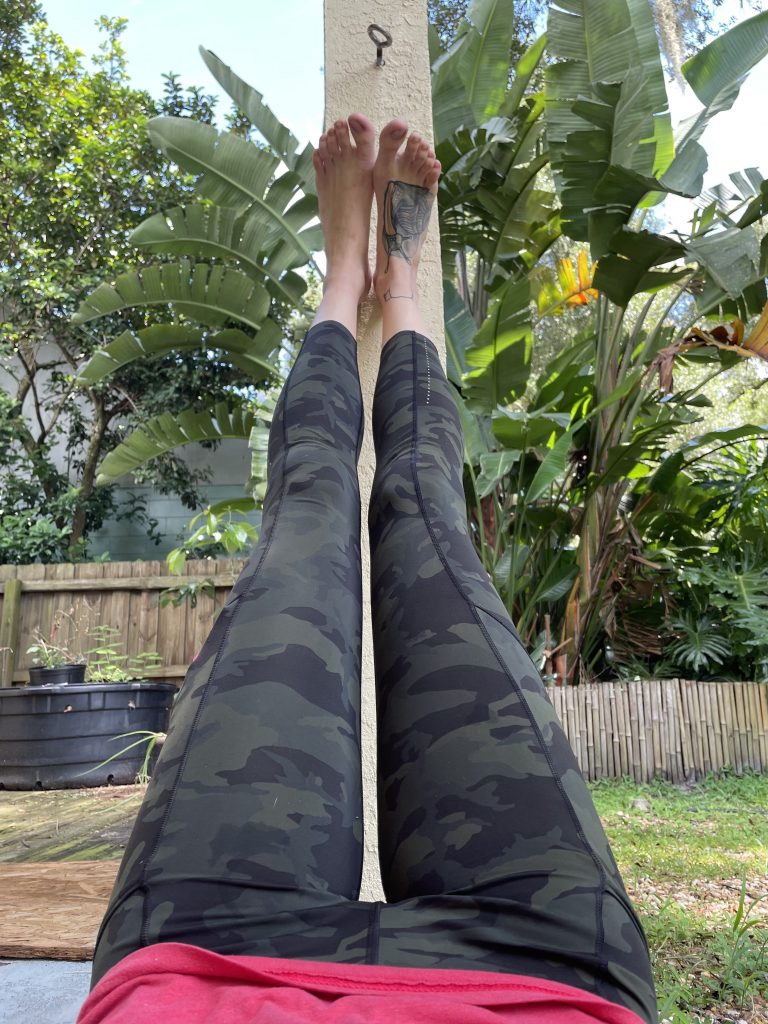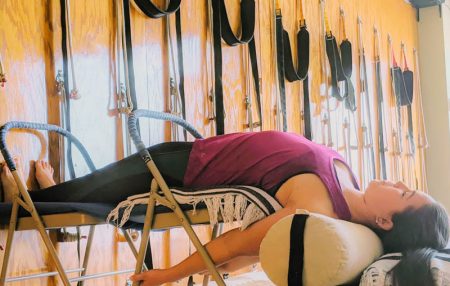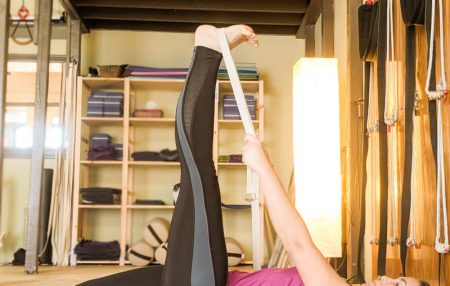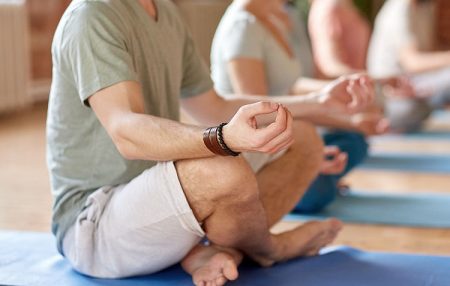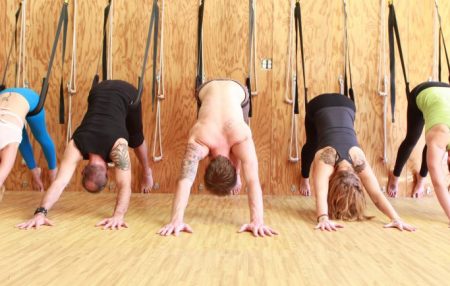What does alignment mean in the context of a yoga practice?
Alignment and Yoga
We talk a lot about alignment in our yoga classes at the Yoga Shed. So what does ‘alignment’ mean in the context of yoga and why is it so important?
Well, let’s start with a little context and respect for those who brought us these gifts of Yoga. Throughout the month of December, there are many celebrations and remembrances going on in honor of B.K.S Iyengar and Geeta S. Iyengar, both of whom shared birthdays in December.
B.K.S Iyengar is a key figure in the development of modern yoga; he emphasized the importance of precision and alignment in the practice of asana (yoga postures). His approach, known as Iyengar Yoga focuses on the use of props such as belts, blocks, and bolsters to help students of all ages and abilities achieve correct alignment in the poses.
Alignment begins with the physical body, but it does not end there.
In our practice of the asanas (yoga postures) we begin to cultivate an awareness of the physical body. “Straighten the elbows and raise the arms overhead” is something you might hear in a yoga class with us. It might be followed by something like “When you reach up through the arms, do you feel how the sides of the chest and spine elongate?”. This socratic method of doing, observing, and reflecting on the sensations within the body is one of the hallmarks of Iyengar yoga. With consistent practice we move beyond this initial layer to penetrate our awareness deeper within, to include a growing awareness of how these actions affect our emotional, mental, intellectual, energetic and breath bodies. In Yogic philosophy, we have several Koshas (or layers) of being. Our practice of yoga helps us to unite them, and indeed even the root of the word yoga (yuj) means to join, or unite.
Once you move beyond the initial physical and physiological effects of the practice, you begin to observe how the asana (postures) and pranayama (breathwork) practices affect not just your body, but they also have a profound effect on your overall sense of wellbeing.
What does alignment feel like?
Coming into alignment might feel like becoming aware of and then learning how to correct the imbalances within your body, using skillful action. This is learned in class, and often with the help of a teacher. I recall one of the first private lessons with my teacher, where she aligned my spine within adho mukha svanasana (down dog pose). She said “there, now you are straight in the center”, although I felt completely sideways! This is called proprioception, or the awareness of your body position. Often we are not aware in the beginning, and our yoga practice helps to refine our awareness. It gives us the experience to see ourselves clearly, and become more balanced, even, and aligned.
Energetically, being in alignment feels like the energy is flowing through us. That there are no blockages, or areas of tightness or dullness. Emotionally, it might feel like there’s a sense of balance, of even temperedness and an abiding calm. So that whatever challenges we are faced with, we have the inner space and fortitude to deal with them.
Being out of alignment would be the opposite. It might feel as if you have no space within your mind and body to deal with what’s going on. Or that any little difficulty is just too overwhelming. Luckily, yoga is rich with tools to cope well with life. It offers us so many ways to practice, and not just on the physical plane.
The Yamas and Niyamas
The ethical principles of yama and niyama are the foundation of our yoga practice. Without them yoga is simply calisthenics. Our practice of ahimsa (non harm) keeps us safe, and moving and acting with compassion for ourselves and others. The practice of satya (truthfulness) and santosha (contentment) encourage us to practice according to our needs and personal context. All of the ten yamas and niyamas are essential practices and observances that help us to live skillfully and well.
Parampara, the teacher-student relationship
In the age of zoom and online yoga classes, it has become even more important to discuss the importance of having a teacher-student relationship. While the explosion of online yoga classes has been a boon to many, myself included, it is not a replacement for in person yoga classes with an experienced teacher. Online yoga gives us access to teachers not physically near us, but it can never create the kind of deep connections we get from being observed in person, or adjusted by our teachers.
Beginner Yoga at the Yoga Shed in DeLand
If you are looking for a place to start your yoga practice, especially if you are new to yoga, join our beginner yoga series at the Yoga Shed! We are located in DeLand, and our yoga studio has been serving our community for more than a decade. We place an emphasis on alignment because it keeps you safe, not just as a beginner yoga student. Our students come from all walks of life, and all ages and abilities. Our skilled and experienced yoga teachers will guide you in such a way that you will leave feeling better, and empowered to take your health into your own hands.
We look forward to sharing the gifts of yoga with you.
In honor and recognition of the many teachers that have come before us,
~ Namaste
Here are some ways in which we practice yoga at the Yoga Shed in DeLand. We’re located at 1407 Flight Line Blvd and can be reached at 386 943 9180
Yoga Shedder Spotlight – Mike Shayeson
If you’ve been taking classes at the studio, you’ve probably met one of our most ardent Yoga Shed practitioners: Mike Shayeson! We’d like to share his experience with you, so that it may inspire you on your yoga journey.
Q: When did you first take a yoga class?
October 2016 I began my first yoga classes in Cincinnati with about a month of private lessons. This was the same time as I found a house in DeLand and would be closing on it within 2 months and begin a year long renovation. I thus found myself in DeLand a lot of the time and my Cincinnati yoga instructor found the Yoga Shed when I asked her for a referral. I began to take lessons at the Yoga Shed in January 2017.
Q: What keeps you coming back to classes?
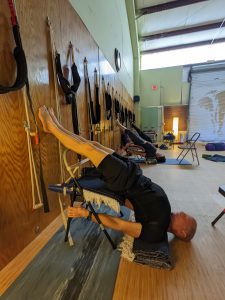
A: I have always been an active individual and participated in activities that required strength and endurance. Some of the activities include, sailing, weight training/ body building, hiking, canoeing, etc. Once I began my yoga practice at the Yoga Shed, I started to have a much better understanding and appreciation for my body and how to continually improve how I feel physically. This was critical to me as through the years I have suffered numerous injuries such as bone breaks, sprains, muscle tears, etc. What I found at the Yoga Shed was not simply trying to look like my instructor in her asana but HOW to look like my instructor when I was taught the alignment of the various joints and body parts. This especially became apparent to me when I signed on to the 300 hour teacher training. My expectations for taking this course was never to actually teach (although I do on occasion and enjoy doing so) but to do a deep dive into the yoga asanas and other limbs of yoga. I was not disappointed and would highly recommend taking this course to anyone who may want to improve the overall well-being! I keep coming back because I ALWAYS feel better after my classes both physically mentally and spiritually. I also come back because my teachers bring a new element to each practice where I can experience something new for my continuing practice. The more I come the better I feel, ALWAYS!!
Q: In what way has yoga impacted your life?
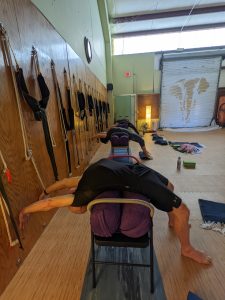 Wow, this is a big one. Yoga has impacted my life in many ways. From a physical standpoint, I am stronger today (almost 72 years old) than I was when I was in my 20s. More importantly, I have learned to CONTROL my body in movements and range of motion. This has probably been the greatest help in maintaining my activity level as my body grows older. So often in the past, I would throw my body in to something without consideration it may not be well controlled and often I would injure myself (torn quad in my 20s playing racquetball, reinjured displaced vertebrae in my back while hiking out on a sailboat, etc.). With yoga, I have developed an inner awareness and a mindfulness of movement in virtually everything I do physically. The kind of thing that saves my back when moving or lifting a heavy object. From a mental/spiritual side, yoga has been far more beneficial to me than I had ever considered it would have. During my teacher training, we spent some of our time on all 8 limbs of yoga. Spending time studying the Yamas and Niyamas added a new element to high I would treat myself as I would practice my asanas. The Pranayama was extremely helpful for me to improve my asana practice. I also found the pranayama practice vastly improved my weight training as well. As my practice has become more of an all consuming endeavor (that I truly enjoy), I have begun to “TASTE” a bit of the next four limbs of yoga. Pratyahara – turning within, Dharana – focused concentration, Dhyana – meditative absorption, and Samadhi – Bliss, one with the Universe, enlightenment. I hope to have more than just a taste of these last 4, but with more of a long term relationship, which I hope will come with more practice.
Wow, this is a big one. Yoga has impacted my life in many ways. From a physical standpoint, I am stronger today (almost 72 years old) than I was when I was in my 20s. More importantly, I have learned to CONTROL my body in movements and range of motion. This has probably been the greatest help in maintaining my activity level as my body grows older. So often in the past, I would throw my body in to something without consideration it may not be well controlled and often I would injure myself (torn quad in my 20s playing racquetball, reinjured displaced vertebrae in my back while hiking out on a sailboat, etc.). With yoga, I have developed an inner awareness and a mindfulness of movement in virtually everything I do physically. The kind of thing that saves my back when moving or lifting a heavy object. From a mental/spiritual side, yoga has been far more beneficial to me than I had ever considered it would have. During my teacher training, we spent some of our time on all 8 limbs of yoga. Spending time studying the Yamas and Niyamas added a new element to high I would treat myself as I would practice my asanas. The Pranayama was extremely helpful for me to improve my asana practice. I also found the pranayama practice vastly improved my weight training as well. As my practice has become more of an all consuming endeavor (that I truly enjoy), I have begun to “TASTE” a bit of the next four limbs of yoga. Pratyahara – turning within, Dharana – focused concentration, Dhyana – meditative absorption, and Samadhi – Bliss, one with the Universe, enlightenment. I hope to have more than just a taste of these last 4, but with more of a long term relationship, which I hope will come with more practice.
Q: What is something that connects you with your yoga community?
A: I feel very blessed that I had the opportunity to find my way to the Yoga Shed. Every instructor there has always been excellent and has made the yoga experience a pleasant one. There is no pressure to “push through” the pain or discomfort but instead, they find a way to achieve the same goals but with less discomfort with their knowledge and use of the wonderful props this particular studio has. The yoga wall is an amazing tool that can make the novice feel in control and good about their practice, while can still give the seasoned practitioner opportunities to do some of the more challenging poses with an assist.
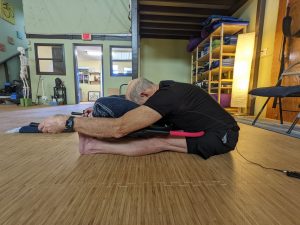
Q: What aspect of your yoga practice interests you most?
I would probably have to answer this with my asana practice, only because I probably spend most of time in this practice. That being said, I still have a large interest in the other 7 limbs as well and do attempt to broaden my yoga studies into these limbs. I try to attend as many classes being taught at the Yoga Shed, as possible. This currently means I go to about 4 classes a week and would go to 3 more but have some scheduling conflicts. Everyday that I am home and not traveling I start my morning with a 45 minute to 1 hour yoga practice at home. There is more meditation in this practice than heavy duty asanas. This light asana practice and my preparation practice of sitting in Padmasana, has really been very rewarding for me. My mental and physical state is primed and ready to take on the day. The other beautiful aspect of yoga that I really enjoy is the fact you really do not need much of anything to have a wonderful practice. A mat (although not absolutely necessary), a few blocks (which I’m finding I need less and less) and that’s about all you need. I hope to continue my yoga practice until my last breadth. Hopefully my practice will extend that date quite a few years out.
—
Thank you, Mike, for sharing with us and being a part of our Yoga Shed community. If you’d like to contribute your experience, please email us at info@yoga-shed.com and we’d love to hear from you and share your story!
Namaste, Yogis!
Tips for Your Home Practice
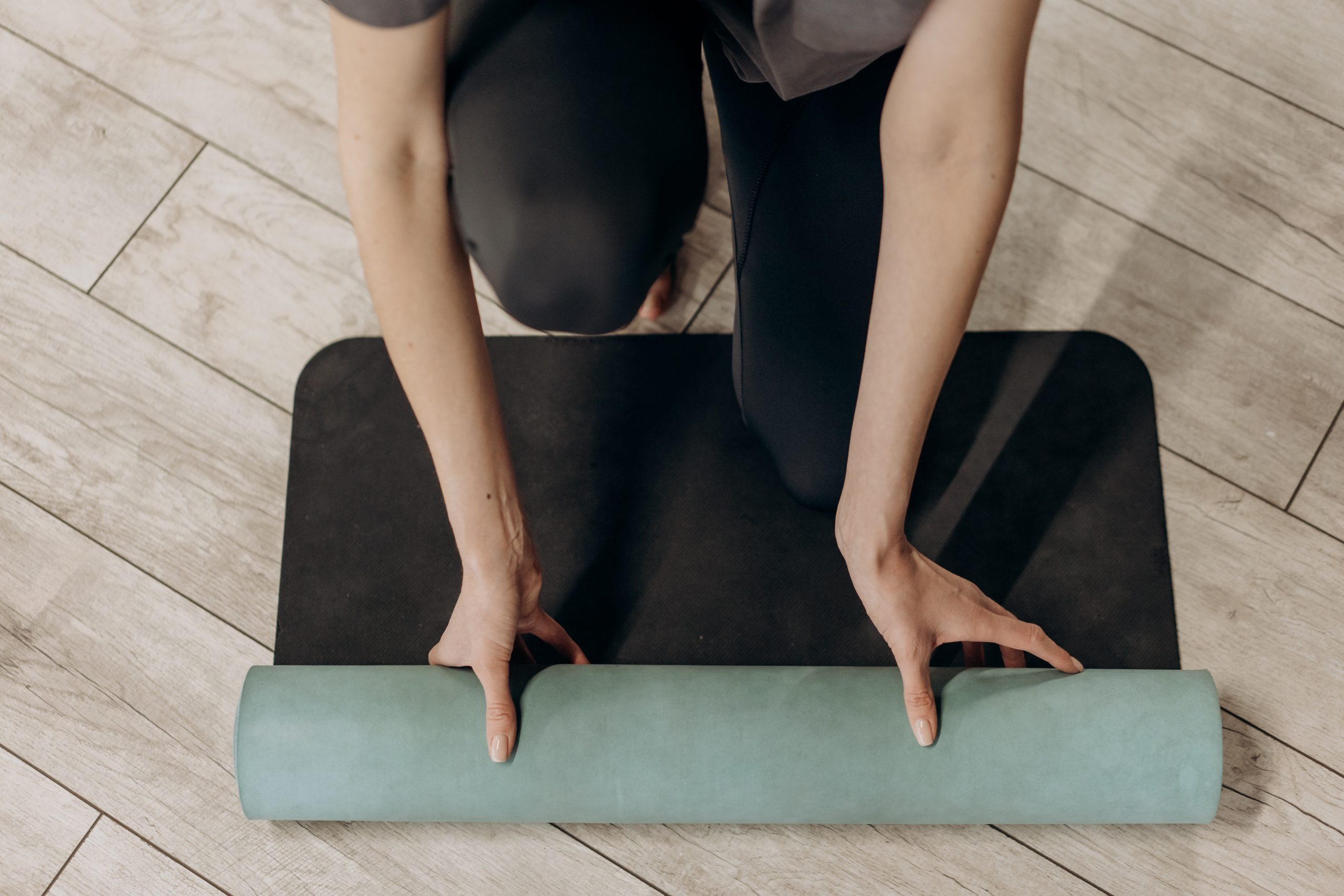
If there’s anything that a global pandemic has taught us, it’s that developing a home yoga practice can be beneficial. If you’re like many other Shedders and struggled to practice from home, we understand! Creating a space that is ideal for a yoga practice takes time, effort, and, well, practice. It may require adjusting your home schedule and moving around furniture. And if you have children or pets running around the house, how can you expect to get any peace and quiet?
Our Yoga-Shed teachers are here to share some of their best tips on how we practice from home. All it takes is a few minutes out of your day to start building the habit.
Set up a designated space if you can and don’t overcommit. If you don’t have the space to keep a mat out, consider making a small altar with a candle or an inspiring photo . Start with 5 minutes and see where it takes you. You can even start with a simple one minute meditation to slow down and reset your breathe. Even one minute of intentional practice is better than none.
Tip #2: Apply Alignment to Everyday Tasks
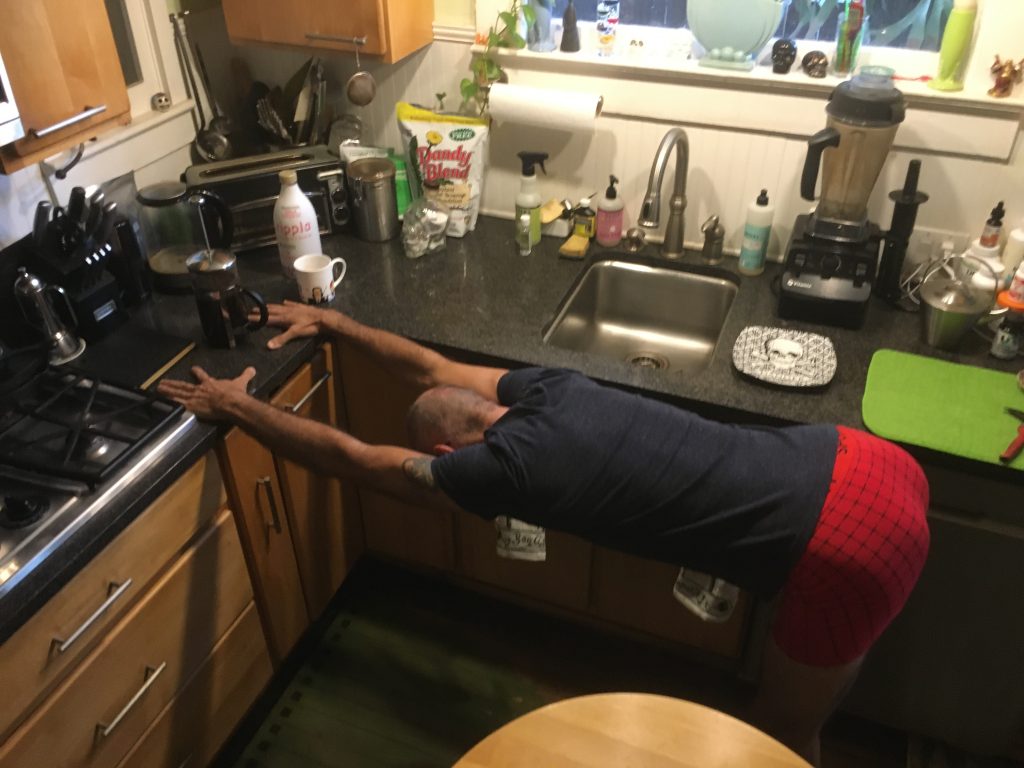
In the morning, do wall push from your kitchen counter waiting for the coffee to brew. Weave in forward folds, padangusthasana, or malasana (garland pose) throughout the day. Set your shoulders while waiting in line at Publix. Alternate between mountain pose and utkatasana (chair pose) when you talk on the phone.
Tip #3: Explore Yoga Postures with Modifications
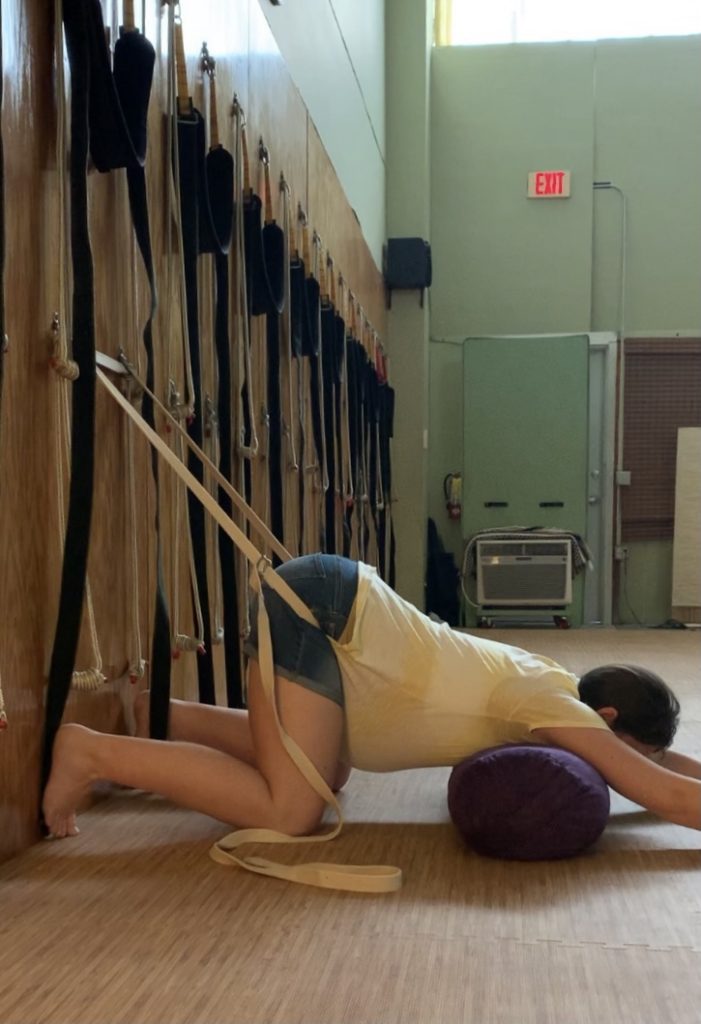
Don’t be afraid to try new and more challenging asanas, so that your home practice doesn’t get dull. How do you go about trying something new without the direct guidance from your teacher? By using modifications! Challenge yourself mindfully by modifying the yoga posture to fit your needs and abilities.
If you’re not sure, get stuck, or have any physical limitations/injuries, just ask your teacher. We are happy to help and will find the best solution that works for you and your body!
For example, pregnancy completely changes your body. Until I talked to my doula, I was unsure what would bring relief to my achy and changing body and would also be the most beneficial to my baby. Knee-to-chest position, or what we call “puppy pose” in yoga, brings relief to achy hips, groins, and spine while aligning baby to help keep him in the most ideal position for labor and delivery. I added extra support (refer to picture) to make it even more comfortable for me. This can also be easily done at home by wrapping the strap around the doorknob of a closed door!
Tip #4: Practice Self-Compassion
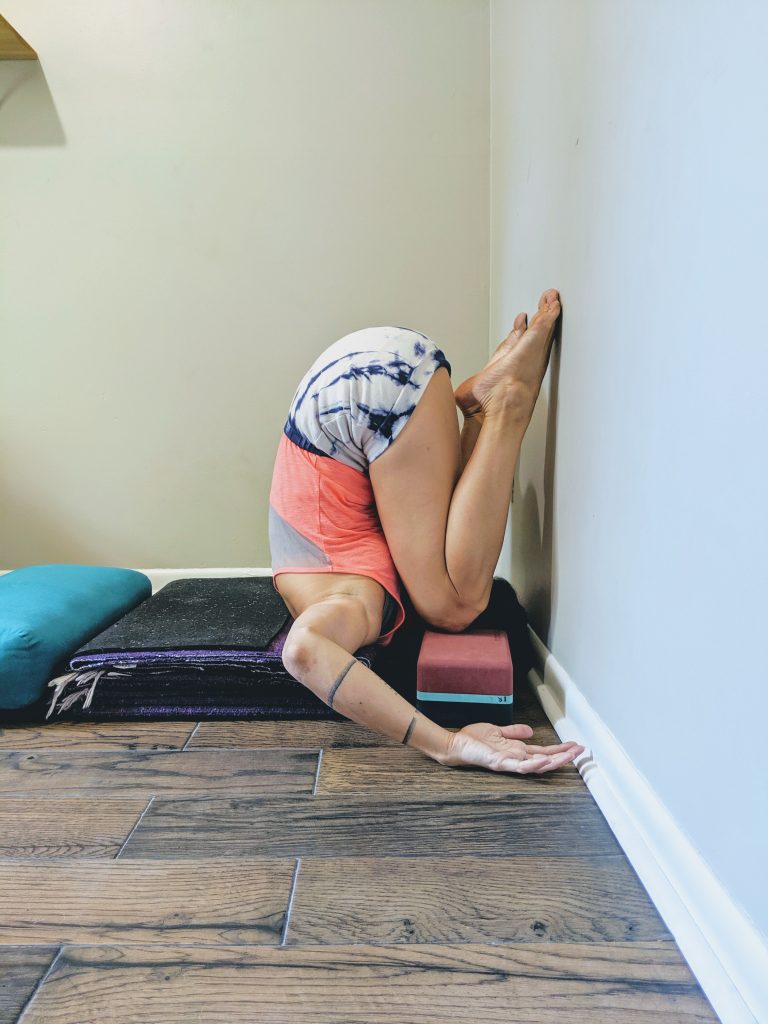
A home practice offers more opportunity for cultivating patience, compassion, self-study and equanimity than you might think.
At home you will be interrupted, and you won’t always have complete silence or the perfect space. It is a unique opportunity to work on your reactivity, to pause and exhale before dealing with the interruption. You don’t have the teacher taking note of imbalances in your body, so you’re required to look within – to become your own teacher, to refine your sensitivity to what’s happening in your own body.
Your expectations of how your practice should go will be challenged – providing you with a chance to observe your own relationship with change and difficulty. Maybe you want to practice Urdhva Dhanurasana today, and feel you need an energizing and empowering practice. Then your body says “Nope. Not today”. So you adapt, and find a way to practice that works for you in that moment.
I’ve had home practices where there’s unavoidable noise around me and I had to really work to tame the monkey mind. Sometimes I’ll practice on the floor in front of the tv. I once watched my teacher, Abhijata, being interrupted by her small child, and seeing how she handled it with compassion and focus was awe inspiring. Having my daughter get inspired by and want to try shoulder stand and show her friends has made my heart swell. And seeing my students & teachers on Zoom with various fur babies has offered a new opportunity to connect.
Don’t stress over the fact that there are many distractions at home – they will make you a more compassionate, patient and ardent student if you embrace those opportunities.
Tip #5: Broaden Your Yoga Knowledge
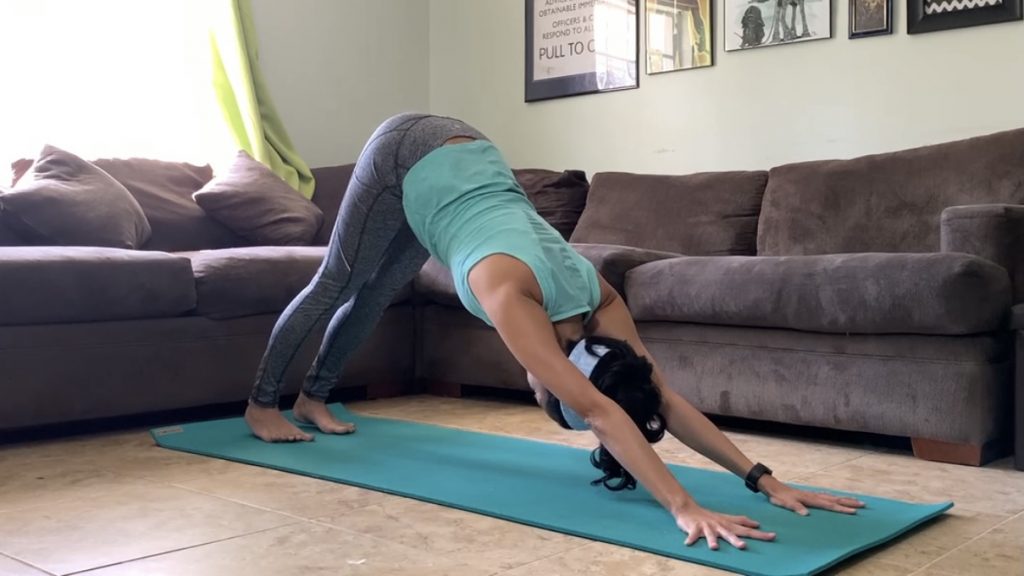
If time or space is limited, or even if you just don’t feel like rolling out the mat today, then pick up a yoga book or listen to a podcast. You can learn so much about your own practice by reading or listening to resources that relate to yoga. There are numerous yoga books and podcasts that exist. It only takes a few minutes a day to explore what’s out there.
Book Recommendations:
- Light on Yoga by BKS Iyengar
- How to Meditate by John Novak
- Stillness is the Key by Ryan Holiday
- Yoga Nidra by Richard Miller PhD
Props For Yoga
There are many reasons why props are used in yoga. Their use was pioneered…
A Look Inside the Yoga Shed
The Yoga Shed Studio is located just across the street from Skydive DeLand…
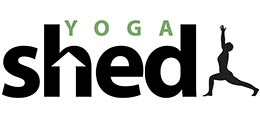
![What does alignment mean in the context of a yoga practice? Alignment and Yoga We talk a lot about alignment in our yoga classes at the Yoga Shed. So what does ‘alignment’ mean in the context of yoga and why is […]](https://yogadeland.com/wp-content/uploads/2023/12/align-450x286.png)
